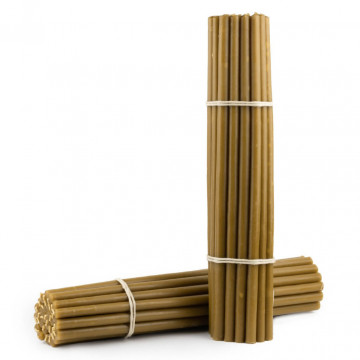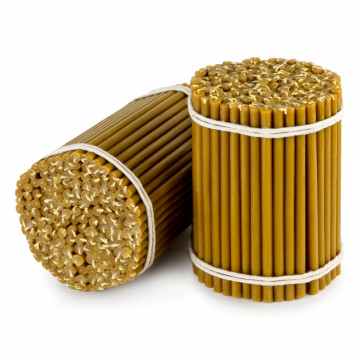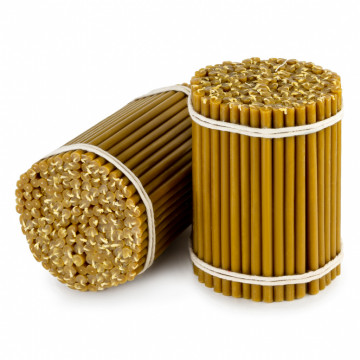Orthodox candles hold an important place in Christian tradition, symbolizing the light of Christ and serving as an essential element in liturgical rites. These candles not only fulfill a functional role but also serve as expressive symbols of faith, purity, and spirituality. In this article, we will take a closer look at the production process, the materials used, and the historical roots of these candles.
Historical Aspects
The manufacture of candles has ancient roots that date back to the early days of Christianity. At that time, candles were handmade, and their primary material was fat or wax. Over time, as Christianity spread, the need for lighting churches increased, and the use of candles became an integral part of the liturgy.
According to historical sources, in the 4th century, beeswax began to be used in the East, becoming a symbol of purity and holiness. The use of wax in Orthodox churches is associated with its spiritual and practical properties: it burns well and emits a pleasant aroma, creating an atmosphere of sanctity during services.
The Holy Scriptures also emphasize the importance of light in the lives of believers. In the Gospel of Matthew (5:14-16), it is said: "You are the light of the world. A city that is set on a hill cannot be hidden. Nor do they light a lamp and put it under a basket, but on a lampstand, and it gives light to all who are in the house. Let your light so shine before men, that they may see your good works and glorify your Father in heaven." This commandment inspires believers to use candles as symbols of their faith.
Materials
The main materials used in the production of Orthodox candles are:
- Pure beeswax: This material is traditional and highly esteemed. Beeswax has high purity, a natural aroma, and burns long and evenly. It symbolizes purity and holiness, thus being used in liturgy and prayers.
- Paraffin: This material is used in the production of more accessible and economical candles. Paraffin also burns well; however, it is used less frequently as it is considered a less noble material compared to wax.
- A mixture of wax and paraffin: This combination allows the benefits of both materials to be combined, offering an affordable product with good burning properties.
- Natural dyes and fragrances: Natural dyes may be used in the production of candles to create various shades, as well as aromatic additives that give the candles a pleasant scent.
Production
The production process of Orthodox candles includes several stages:
- Collection and preparation of materials: Initially, the wax is prepared by cleaning it of impurities. Beeswax usually requires melting and filtering.
- Melting: The wax is heated until it becomes liquid. The melting temperature of the wax varies, which is important for obtaining a quality product.
- Molding or dipping: The melted wax is poured into molds or used for repeated dipping of the wick to create a candle of the desired shape and size.
- Cooling and packaging: After the molding process is completed, the candles are cooled and then packaged for sale. Some artisans may decorate the finished products by adding ornaments or colors.
- Quality control: At each stage, it is important to control the quality of the products so that the candles burn evenly and for a long time.
Conclusion
Orthodox candles are not just objects used in rituals. They embody the light and warmth of faith, filling churches and the hearts of believers with an atmosphere of grace. The traditions of candle-making, preserved for centuries, emphasize their importance in Orthodox culture. Each candle lit by a believer becomes a symbol of prayer and hope, illuminating the path to God.
Candles are also mentioned in the Holy Scriptures. For example, in the book of Exodus (27:20), there is a command to illuminate the lamp: "And you shall command the children of Israel that they bring you pure oil of pressed olives for the light, to cause the lamp to burn continually." This indicates that the light, symbolized by candles, should always be present in the lives of believers.








